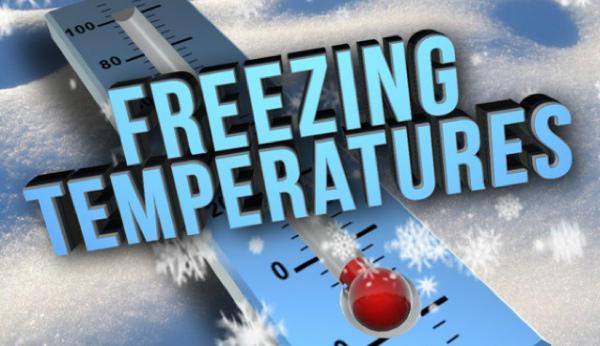
Stoddard County, Missouri – Winter has arrived in southeast Missouri and with much of Missouri having temps below freezing or at least near the zero march this week there are few things we need to do to prepare!
The National Weather Service in Paducah, KY says an extended period of arctic cold is expected this week. High temperatures will likely stay well below freezing after Tuesday. The greatest concern is late Tuesday night through Wednesday night. Gusty winds will force temperatures to fall through the teens Wednesday.
That has prompted the Centers for Disease Control and Prevention to urge people to be prepared in case of winter weather emergencies.
The CDC has a list of things to areas to double check before temperatures get dangerously low.
Communication Checklist
•Make sure you have at least one of the following in case there is a power failure: ◦Cell phone, portable charger, and extra batteries.
◦Battery-powered radio, with extra batteries, for listening to local emergency instructions ◾National Oceanic and Atmospheric Administration (NOAA) weather radio receiver for listening to National Weather Service broadcasts.
•Listen to emergency broadcasts.
•Make a Family Communication Plan. Your family may not be together during an extreme winter event, so it is important to know how you will contact one another, how you will get back together, and what you will do during an emergency.
•Be sure to check on older neighbors and family members; assist as necessary.
Heating Checklist
•Turning on the stove for heat is not safe; have at least one of the following heat sources in case the power goes out: ◦Extra blankets, sleeping bags, and warm winter coats
◦Fireplace with plenty of dry firewood or a gas log fireplace
◦Portable space heaters or kerosene heaters
•Check with your local fire department to make sure that kerosene heaters are legal in your area.
•Use electric space heaters with automatic shut-off switches and non-glowing elements.
•Never place a space heater on top of furniture or near water.
•Never leave children unattended near a space heater.
•Keep heat sources at least 3 feet away from furniture and drapes.
•Have the following safety equipment: ◦Chemical fire extinguisher
◦Smoke alarm in working order (Check prior to winter storm season and change batteries, if needed.)
◦Carbon monoxide detector (Check prior to winter storm season and change batteries, if needed.)
•Never use an electric generator indoors, inside the garage, or near the air intake of your home because of the risk of carbon monoxide poisoning.
•Do not use the generator or appliances if they are wet.
•Do not store gasoline indoors where the fumes could ignite.
•Use individual heavy-duty, outdoor-rated cords to plug in other appliances.
Cooking and Lighting Checklist
•Use battery-powered flashlights or lanterns.
•Never use charcoal grills or portable gas camp stoves indoors. The fumes are deadly.
•Avoid using candles as these can lead to house fires.
•If you do use candles, never leave lit candles alone.
Food and Safety Checklist
Have a week’s worth of food and safety supplies. If you live far from other people, have more supplies on hand. Make sure you have the following supplies:
•Drinking water
•Canned/no-cook food (bread, crackers, dried fruits)
•Non-electric can opener
•Baby food and formula (if baby in the household)
•Prescription drugs and other medicine
•First-aid kit
•Rock-salt to melt ice on walkways
•Supply of cat litter or bag of sand to add traction on walkways
•Flashlight and extra batteries
•Battery-powered lamps or lanterns
(To prevent the risk of fire, avoid using candles.)
Water Checklist
Keep a water supply. Extreme cold can cause water pipes in your home to freeze and sometimes break.
•Leave all water taps slightly open so they drip continuously.
•Keep the indoor temperature warm.
•Allow more heated air near pipes. Open kitchen cabinet doors under the kitchen sink.
•If your pipes do freeze, do not thaw them with a torch. Thaw the pipes slowly with warm air from an electric hair dryer.
•If you cannot thaw your pipes, or if the pipes have broken open, use bottled water or get water from a neighbor’s home.
•Fill the bathtub or have bottled water on hand.
•In an emergency, if no other water is available, snow can be melted for water. Bringing water to a rolling boil for one minute will kill most germs but won’t get rid of chemicals sometimes found in snow.
Car and Emergency Checklist
Is Your Vehicle Winter Ready? - A bird character near the back of a vehicle with a water bottle, flash light, ice scraper, jumper cables, cell phone, shovel, first aid kit, and blankets. Minimize travel, but if travel is necessary, keep the following in your vehicle:
•Cell phone, portable charger, and extra batteries
•Shovel
•Windshield scraper
•Battery-powered radio with extra batteries
•Flashlight with extra batteries
•Water
•Snack food
•Blankets
•Road salt and sand
•Booster cables
•Bright colored flag or help signs
•First aid kit
•Tool kit
•Road maps
•Compass
•Waterproof matches and a can to melt snow for water
•Paper towels

